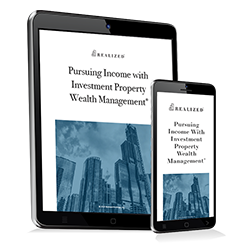
Self-directed individual retirement accounts (SDIRAs) can have some potential benefits compared to traditional employer-sponsored retirement accounts, especially for experienced investors.
Employer-sponsored retirement plans such as 401(k)s are usually limited to a narrow range of traditional investment options, such as stocks, bonds, mutual funds, and exchange-traded funds. Self-directed retirement accounts, however, allow you to invest in alternative assets that are off-limits in traditional retirement plans. These assets can include:
- Cryptocurrencies
- Peer-to-peer loans
- Crowdfunding
- Angel investments
- Precious metals
Real estate is another asset class you can hold in a SDIRA. Here’s how to invest in residential or commercial real estate using a self-directed individual retirement account.
Guidelines and Special Considerations for Investing in Real Estate Using a SDIRA
Having the flexibility to choose your own investments can be one of the most beneficial aspects of a self-directed individual retirement account, especially for seasoned real estate investors who can leverage their past experience to identify and pursue potential investment deals.
There is no limit to investing in real estate with a SDIRA in regards to asset class – you can invest in multifamily, retail, residential, self-storage, and many other types of properties. However, there are strict rules you must adhere to when using a SDIRA to invest in real estate.
One primary consideration is that you must make these investments through a third-party self-directed individual retirement account custodian. Once you identify a real estate deal that meets your investment parameters, you’ll notify your custodian, who facilitates the purchase on behalf of your SDIRA. It’s extremely important to note that the property is owned by your self-directed individual retirement account and is a pure investment – you can’t occupy the property or directly benefit from any rental income derived from the asset.
All rental income and expenses associated with the property must come from and flow through your SDIRA. You also must engage a third party to operate and maintain the property. If you purchase a rental home a street away from your primary residence, you can’t just pop over and fix the toilet for your renters, nor can you paint the walls to get the property ready for new tenants. All maintenance and repairs must be done by a third-party service provider that’s completely unrelated to you (see the list of disqualified persons below).
You also must be careful about choosing renters or tenants for commercial properties since transacting with a disqualified person could result in forfeiture of your SDIRA's tax-advantaged status and lead to significant tax liabilities. According to the Internal Revenue Service, disqualified persons include:
- Yourself and your spouse
- Lineal ascendants, descendants, and their spouses and offspring
- Any custodian or fiduciary that provides services relating to your SDIRA
- Any business or corporation where you hold at least a 50-percent interest
Failure to adhere to these guidelines regarding disqualified persons could result in your SDIRA losing its tax-advantaged status dating back to the first day of the year in which the prohibited transaction took place. All assets within your self-directed individual retirement account will be distributed to you at fair market value, and if the value exceeds your costs basis in the SDIRA, you’ll have a taxable gain included in that year’s income.1
Putting it all Together
Although there are many rules regarding investing in real estate using a SDIRA, it can be fairly easy to avoid running afoul of the IRS’ guidelines on disqualified persons and prohibited transactions.
- Have your SDIRA custodian facilitate the purchase of an investment property
- Ensure all income and expenses for the property flow through your retirement account
- Don’t self-perform any maintenance work or have someone related to you do it
- Rent to tenants completely unrelated to you either by lineage or business association
A SDIRA custodian can help walk you through any additional insight you might need to investing in real estate using a self-directed individual retirement account.
1Retirement Topics: Prohibited Transactions, IRS.gov, https://www.irs.gov/retirement-plans/plan-participant-employee/retirement-topics-prohibited-transactions
This material is for general information and educational purposes only. Information is based on data gathered from what we believe are reliable sources. It is not guaranteed as to accuracy, does not purport to be complete and is not intended to be used as a primary basis for investment decisions. It should also not be construed as advice meeting the particular investment needs of any investor.
Realized does not provide tax or legal advice. This material is not a substitute for seeking the advice of a qualified professional for your individual situation.



